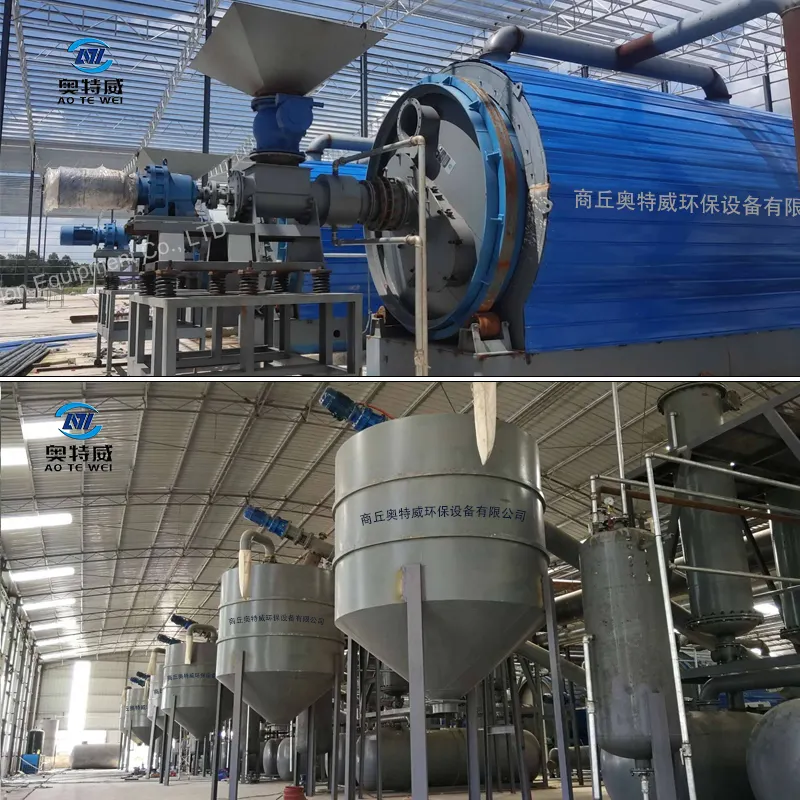The selection of oil recycling equipment represents a critical decision for industrial facilities managing waste oil streams. As environmental regulations tighten and sustainability becomes paramount, proper oil recycling equipment not only ensures regulatory compliance but also delivers significant cost savings through resource recovery. Modern industrial operations must carefully evaluate their specific needs and operational parameters to make an informed investment in recycling technology.
Industrial waste oil management has evolved considerably over the past decade, with advanced oil recycling equipment offering improved efficiency and processing capabilities. These systems can handle various types of waste oils, from manufacturing lubricants to hydraulic fluids, transforming what was once considered waste into valuable resources.
When evaluating oil recycling equipment, processing capacity stands as a fundamental consideration. Facilities must accurately assess their waste oil generation rates and peak processing needs. A thorough analysis should account for seasonal variations and potential future expansion. The selected system should provide sufficient throughput to handle current volumes while allowing for operational growth.
Modern oil recycling equipment offers varying processing speeds, typically ranging from 50 to 5000 liters per hour. Understanding your facility's specific requirements helps prevent both undersizing, which creates processing bottlenecks, and oversizing, which leads to unnecessary capital expenditure and operational inefficiencies.
The effectiveness of oil recycling equipment largely depends on its filtration capabilities. Advanced systems employ multiple stages of filtration, often combining mechanical, chemical, and thermal processes. High-quality equipment should achieve removal rates of 99.9% for solid contaminants and water content below 100 ppm.
Key filtration technologies include centrifugal separation, vacuum dehydration, and multi-stage filtering systems. Each method offers distinct advantages, and many modern units incorporate several approaches to maximize oil purification efficiency. The choice of filtration technology should align with your specific contaminant profiles and desired output quality.
The physical installation of oil recycling equipment demands careful consideration of space requirements and facility layout. Modern systems often feature modular designs that offer installation flexibility, but proper planning remains essential. Consider factors such as access for maintenance, connection points for utilities, and material handling pathways.
Successful integration requires evaluation of existing infrastructure, including power supply capabilities, compressed air availability, and drainage systems. The selected oil recycling equipment should complement your facility's current operations while minimizing disruption to existing processes.
Advanced oil recycling equipment typically incorporates sophisticated control systems that optimize processing efficiency and minimize operator intervention. Look for systems offering programmable logic controllers (PLCs), remote monitoring capabilities, and automated sampling and testing features.
Modern control systems should provide detailed operational data, enabling trend analysis and predictive maintenance scheduling. This level of automation not only improves processing consistency but also reduces labor requirements and human error potential.
Contemporary oil recycling equipment must meet stringent environmental standards. Evaluate systems based on their emission control capabilities, including volatile organic compound (VOC) management and particulate matter containment. Leading equipment manufacturers incorporate advanced filtering systems and sealed processing units to minimize environmental impact.
Consider the complete environmental footprint, including secondary waste streams generated during the recycling process. Effective oil recycling equipment should maximize resource recovery while minimizing disposal requirements for residual materials.
Worker safety remains paramount in industrial oil recycling operations. Quality equipment includes comprehensive safety features such as emergency shutoffs, pressure relief systems, and thermal protection controls. Look for systems with clear safety certifications and compliance with relevant industrial standards.
Advanced safety features should include spill containment systems, fire suppression capabilities, and automated shutdown protocols for various fault conditions. These protective measures safeguard both personnel and facility assets.

The long-term viability of oil recycling equipment depends heavily on its operational economics. Calculate total operating costs, including energy consumption, consumable materials, maintenance requirements, and labor inputs. High-efficiency systems may command premium prices but often deliver superior returns through reduced operating costs.
Consider productivity metrics such as processing speed, downtime requirements, and recovery rates. Advanced oil recycling equipment should demonstrate clear economic advantages through improved resource recovery and reduced waste disposal costs.
Regular maintenance ensures optimal performance and longevity of oil recycling equipment. Evaluate maintenance schedules, spare parts availability, and manufacturer support capabilities. Look for systems with predictive maintenance features and readily available technical support.
Consider the availability of local service providers and the manufacturer's track record in after-sales support. Quality equipment suppliers offer comprehensive training programs and ongoing technical assistance to maximize system reliability.
Modern oil recycling equipment can process various industrial oils, including hydraulic fluids, metalworking oils, transformer oils, and engine lubricants. However, specific equipment may be optimized for certain oil types, so it's essential to match capabilities with your waste stream characteristics.
Maintenance frequencies vary by equipment type and usage intensity, but most systems require daily operational checks, weekly minor maintenance, and comprehensive quarterly servicing. Advanced monitoring systems help optimize maintenance scheduling based on actual usage patterns and performance metrics.
Contemporary oil recycling equipment typically achieves recovery rates between 85% and 95% for most industrial oils, depending on contamination levels and oil type. Advanced systems with multiple processing stages can often push recovery rates above 90% while maintaining high output quality standards.
ROI periods typically range from 12 to 36 months, depending on factors such as processing volume, oil types, and local disposal costs. Facilities processing large volumes of high-value oils often see faster returns, particularly in regions with high disposal fees or strict environmental regulations.
 Hot News
Hot News2024-09-25
2024-09-18
2024-09-12
2024-09-05
2024-08-30
2024-08-23

Copyright © 2025 by Shangqiu AOTEWEI environmental protection equipment Co.,LTD Privacy policy